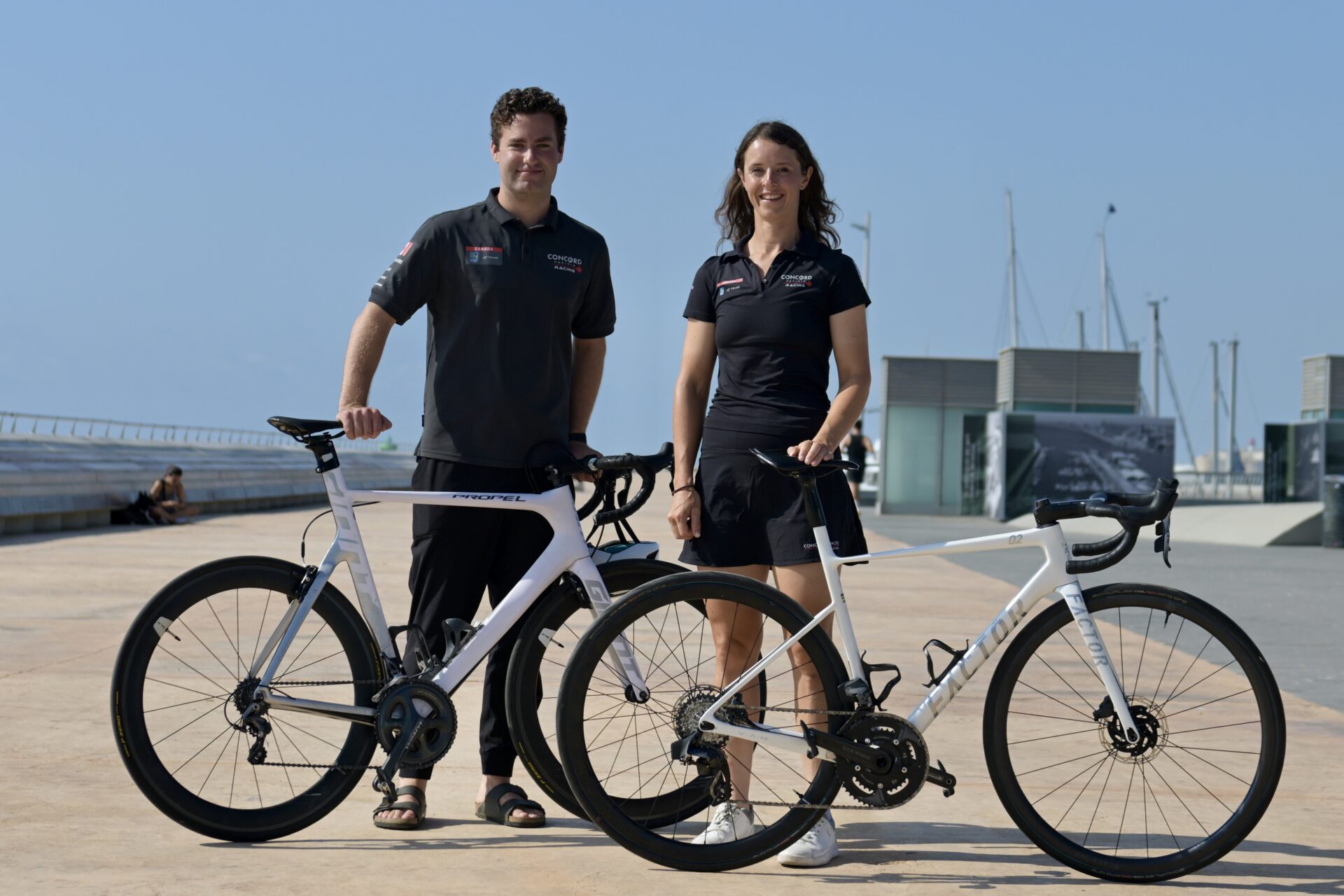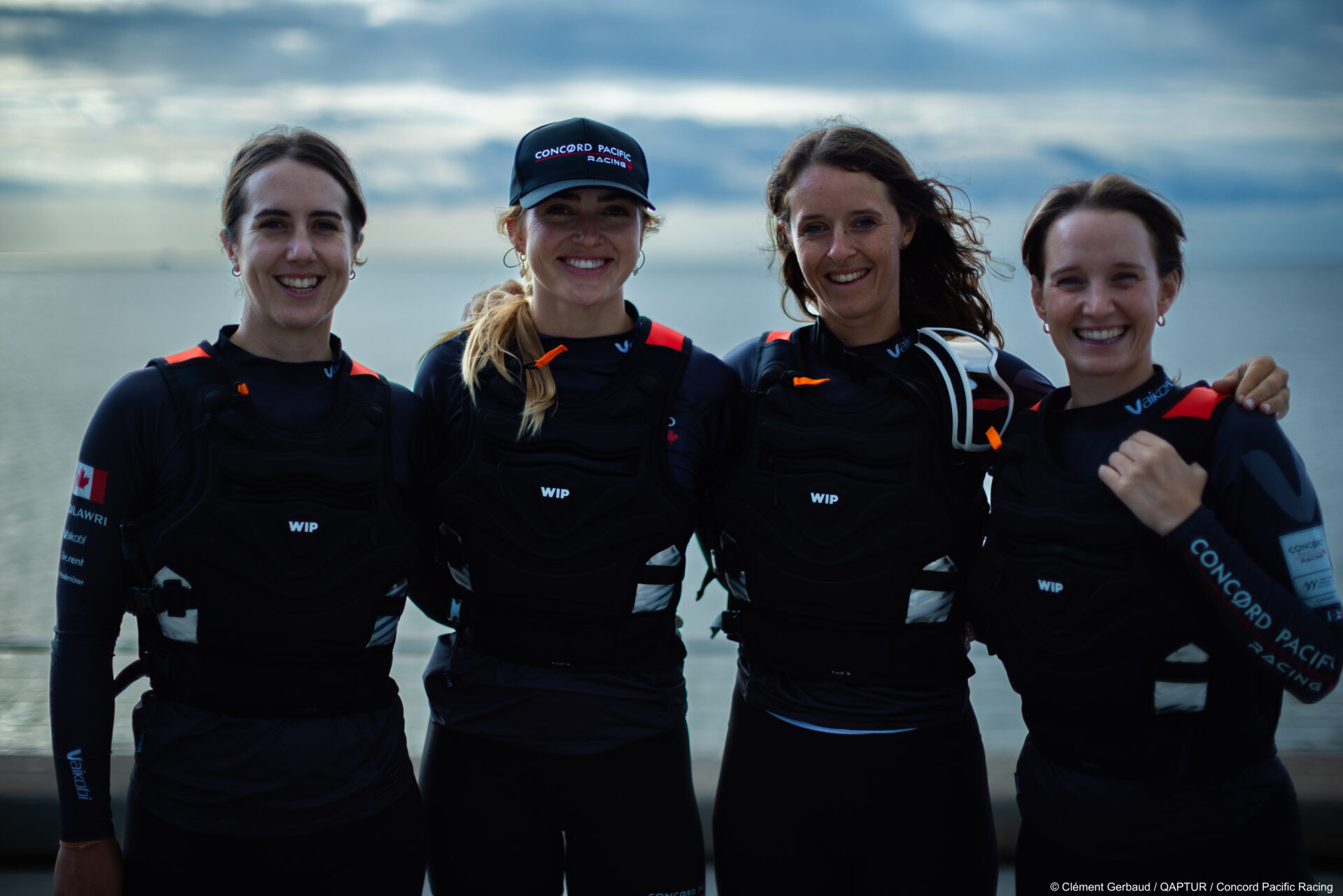In competitive sailing, this is the greatest show on earth. This is where world and Olympic champions come together with the best naval architects and engineers to spend $100+ million budgets in pursuit of the oldest and arguably most sought-after trophy in international sport. This is the biggest dogs with the biggest bucks playing the biggest game.
This is the America’s Cup – “the battleground of the obsessed”.
Now, for the first time in 37 years, Canada is back in the game and once more from a Pacific base. Concord Pacific Racing, representing the Royal Vancouver Yacht Club, is competing in the Youth and Women’s divisions with a star-studded, pan-Canadian crew.
It all began in 1851, when the “Royal Yacht Squadron £100 Cup”, offered by Britain, was lost to the US schooner America, in the initial race. The winners renamed the trophy after their winning boat, and Britannia’s sailors have been trying to win it back ever since. In the ensuing 173 years, it was retained by the New York Yacht Club for 132 consecutive years, until the John Betrand-skippered Australia II broke the spell in 1983. Designed by unconventional and self-taught Australian Ben Lexcen, and literally shrouded in secrecy until after her final win, Australia II was the first yacht ever to feature a winged keel. Since then, the US has won it four times, Switzerland twice and New Zealand, the current holders, four times.
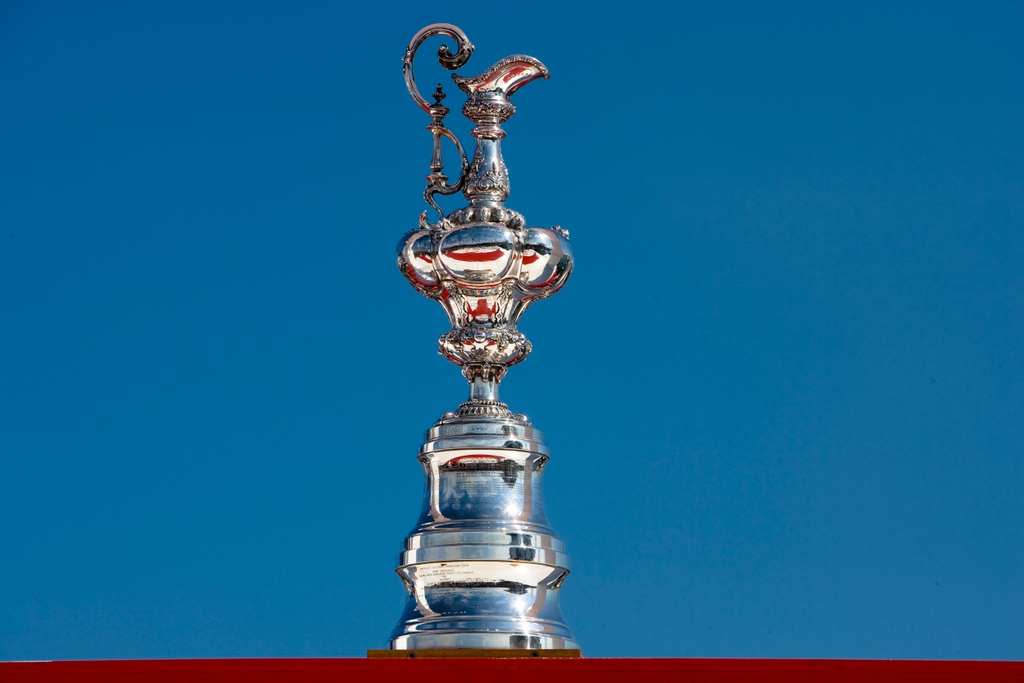
America’s Cup Trophy
Ironically, the Cup, also referred to as “the auld mug” is neither a cup nor a mug. Donated by the Marquess of Anglesey and made of 134 ounces of sterling silver by Messrs. R&S Garrard & Co. of Paxton Street, London, it is, technically, an ewer – a tall, vase-shaped jug – except that it has no bottom, so it is really just a tube. In recent years, a stopper has been available for the bottom so that it can be used to hold some of the winner’s Champagne.
After considering melting it down to make medals for the crew, the 1851 winners ultimately decided to donate their trophy to the New York Yacht Club to be used for a perpetual “friendly competition between nations”. While sportsmanship is still mandatory, some contemporary commentators say that Cup campaigns are now closer to a war – albeit without the lethal intent.
The holder of the Cup sets the rules for the challengers including the type of boats and the location of the regatta. The boats have evolved with time and technology: from schooners to the magnificent J-Boats of the Gilded Age, to 12-metres, to catamarans (spawning the foiling Sail GP cats), to today’s astonishing flying machines: the seven-tonne, 50-knot, AC75 foiling monohulls (see box). As current Cup holder, New Zealand chose to go with further development of the foiling monohulls (first seen in 2021) for this 37th competition.
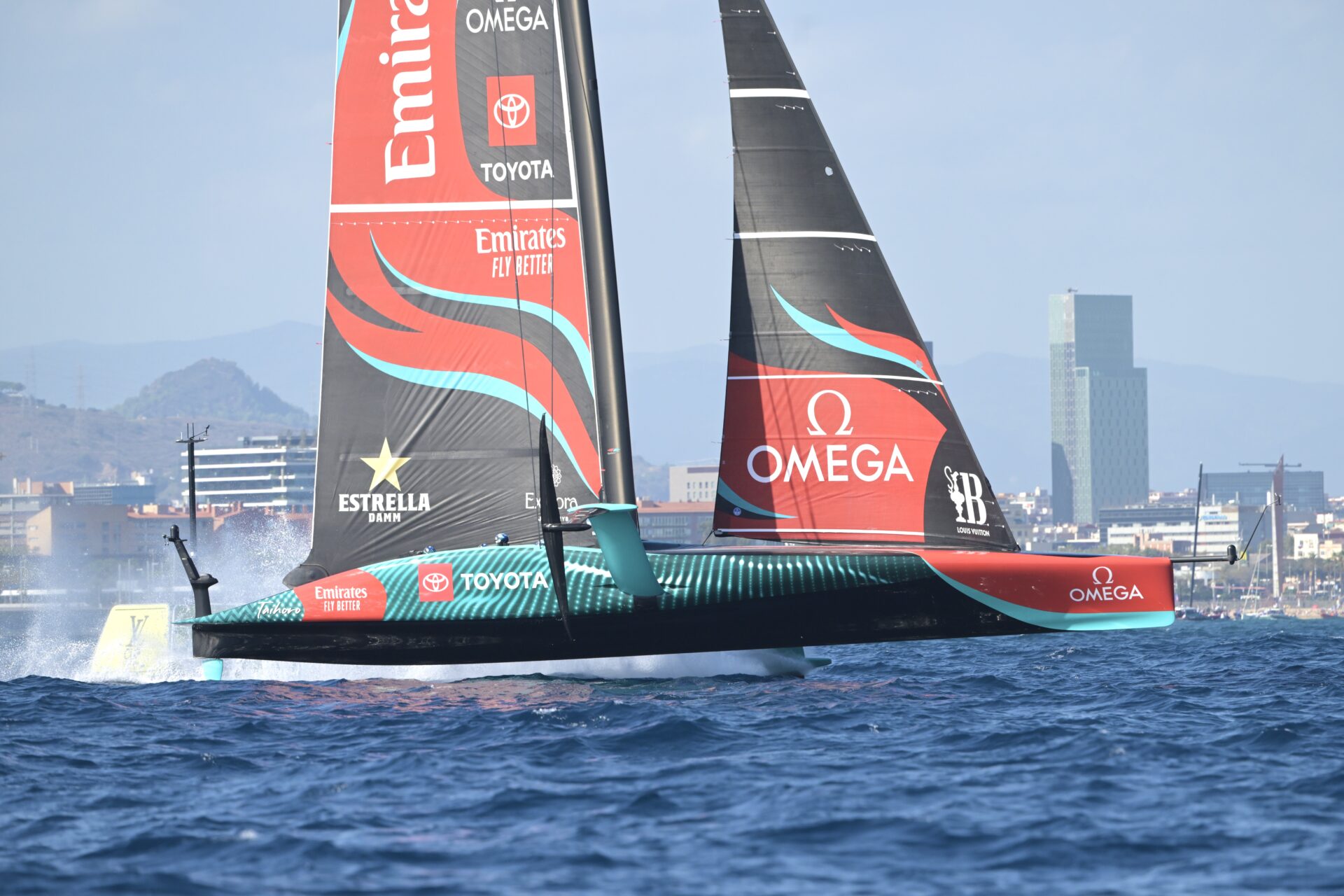
As John Betrand says in the documentary film about his historic 1983 win, Race of the Century (available on Netflix), “To win the America’s Cup, you need money. Lots of money.” It appears this applies not only to the competitors, but also to the hosts. Team New Zealand CEO Grant Dalton turned down an offer of NZ$99 million (C$83 million) from Auckland and instead went with Barcelona as the venue for the 37th Cup, choosing a former Olympic city with all the facilities it needed already in place, and reported event sponsorship of at least NZ$112 million (C$94 million).
Today’s America’s Cup is not just a sailing, or even sailing and engineering, competition. It is equally a global battle of the brands. Sponsors position themselves for glamourous exposure to the worldwide TV audience of 1.5 billion. Every “media impression” is carefully counted. This competition is also fierce. In fashion: Louis Vuitton, Prada, L’Oreal, Belstaff, Puig; in banking: Unicredit, UBS; in automotive: Toyota, Pirelli, Grenadier; in beverages: Red Bull, Estrella, Founders Brewing; in timekeeping: Omega, Tudor…and so many more.
Canada has played this game before: as Challenger in 1876 when the Royal Canadian Yacht Club schooner Countess of Dufferin lost 0-2 and again in 1881 when the Bay of Quinte Yacht Club’s 65-foot sloop Atalanta also lost 0-2. After a 102-year hiatus, Canada returned in 1983 with the cleverly-named 12-metre sloop Canada I. From the drawing board of famed Laser designer Bruce Kirby (of Ottawa’s Britannia Yacht Club) and skippered by Flying Dutchman Olympic silver-medalist Terry McLaughlin of Toronto, she sailed for Secret Cove Yacht Club of Halfmoon Bay, B.C. Canada I made it to the semi-finals, finishing fourth in the Challenger series, which for the first time was for the Louis Vuitton Cup. Extensively rebuilt with a winged keel as Canada II, she was back in 1987 with Finn Olympic bronze-medalist Terry Neilson, another Torontonian, at the helm, recording 15 wins in 34 races and finishing eighth among the 12 yachts in the Louis Vuitton challenger selection series. In the years between, the boat was based out of Victoria. Both skippers are now in the Canadian Sailing Hall of Fame.
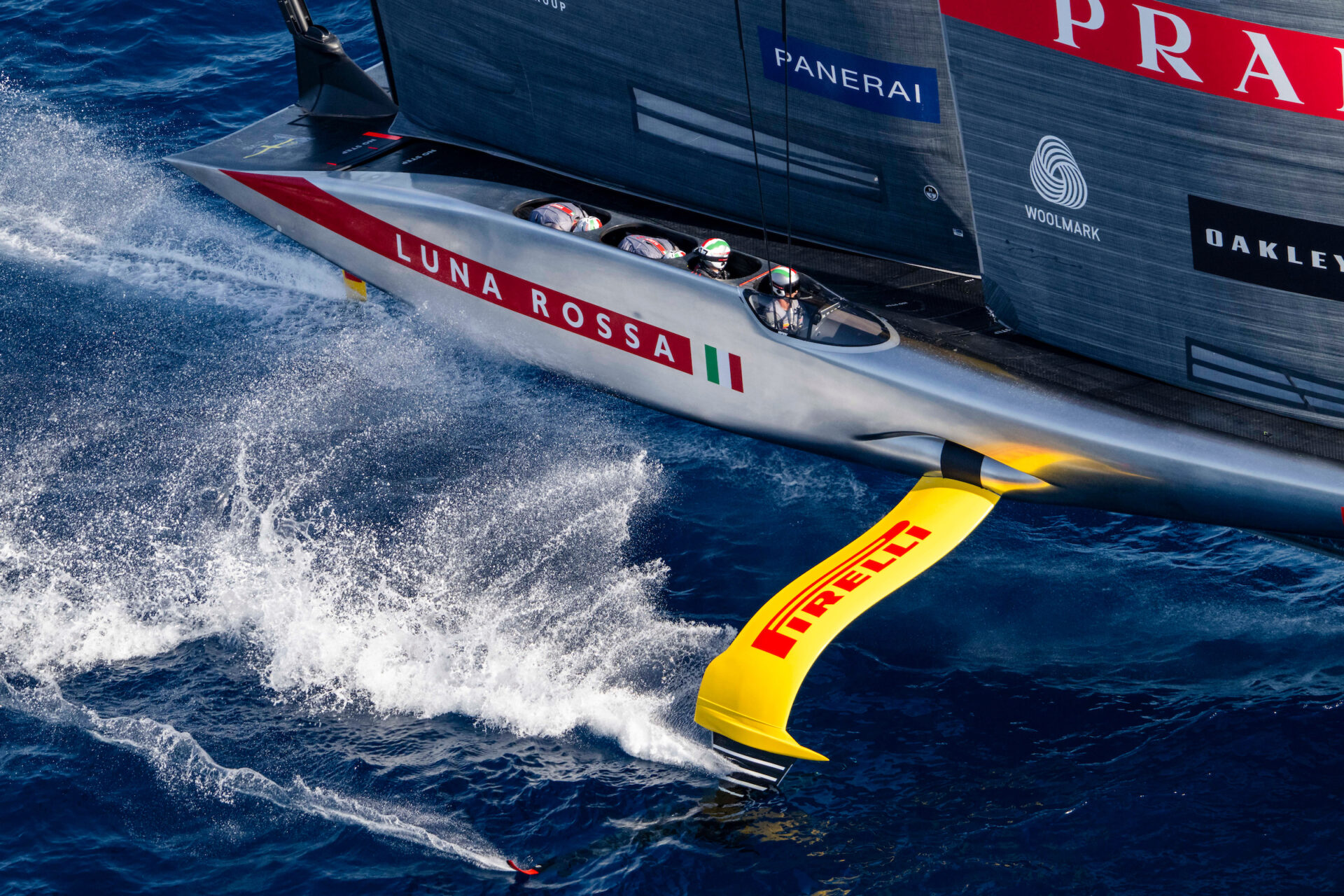
For decades a bastion of tradition, the America’s Cup got a fresh breeze in 2013 with the launch of the Red Bull Youth America’s Cup. Held again in 2017, but not in 2021 due to the pandemic, this “pathway” regatta is intended to empower young people and give them experience to potentially enter the America’s Cup itself. Peter Burling, New Zealand’s rock star skipper this year, got his start in AC racing when he won the inaugural youth AC regatta in San Francisco. Relaunched for 2024 with title sponsor Unicredit, a European bank, it has quickly become the crucible in which the coming generation of foiling sailing stars are making their reputations in a struggle for supremacy.
Similarly, and new for 2024, the Puig Women’s America’s Cup aims to provide “female sailors with a platform to showcase their skills and talent….and provide a skills pathway to the America’s Cup itself.” Puig, a Barcelona-based global beauty and fashion conglomerate and long-time sailing sponsor, is also an America’s Cup “Global Partner” helping foster a larger effort to “promote inclusivity, gender equality and diversity within the sport of sailing”.
Both regattas are making use of the six AC40 foiling monohulls (see box) built by the AC teams for the first two preliminary regattas. Initially used as test beds and development boats, they were equalized to strict one-design standards for the youth and women’s events. Each regatta has two pools of six competitors: one pool from the AC teams (New Zealand, Britain, USA, Switzerland, Italy, France) and one from the six guest nations: Australia, Canada, Germany, Netherlands, Spain, and Sweden. After eight fleet races, the top three teams from each pool go into a semi-final series of four fleet races. In the true America’s Cup tradition that “there is no second place” the top two boats meet in a win or lose final match race.
These new avenues for participation in the America’s Cup sparked Canada’s World Cup champion ILCA6 (Laser Radial) sailor, Isabella Bertold to approach the leadership of her yacht club, Royal Vancouver, with the idea of being the home of a Canadian challenge for 2024. No Canadian yacht club had considered such a question for decades. Bertold was skilled, passionate and persistent – and from her venture capital career had a firm grasp of the financial and managerial challenges as well. Under the far-sighted leadership of then-Commodore Brian Angus, Royal Van signed on in October 2022. When Terry Hui’s Concord Green Energy came on board as title sponsor in March 2024, Concord Pacific Racing was born. RBC and Telus joined as lead sponsors, Dilawri as official sponsor. Recruiting the team began in November 2022, with the final selection in spring 2024 (See Pacific Yachting, July 2024.)
AC40s are named for their length but could equally be named for their 40+ knot top speed. Sailing, let alone racing, one of these beasts is not for the unskilled or unprepared – or the faint of heart! Being skilled means having had a deep and very successfully competitive sailing career, preferably with foiling experience. Being prepared means the crew spending literally thousands of hours training on a simulator, much like jet pilots. And that’s just the beginning.
Like the AC75s, the boats are sailed by two helms and two trimmers, one of each on the port and starboard sides. Unlike the 75s, whose hydraulics are powered by “cyclors” (powerful endurance athletes on pedals), the 40s’ hydraulics for sail and foil trim are battery powered. With both jib and main extending right to the deck, helms cannot see across the boat and must rely on each other for situational awareness, and swap who is steering at every tack or gybe. Likewise, the two trimmers, change roles too. Overall, the windward helm steers and the windward trimmer handles the main while the leeward helm trims the jib and the leeward trimmer handles “flight control”, adjusting the foils to keep the boat at the best height and pitch angle for the conditions. Each crew member is faced by two smart phones programmed as their instrument panels. One gives operational data: boat speed, true wind, apparent wind, foil angles, etcetera, while the other is navigational: distance to marks, course boundaries, other boats, etcetera.
This new way of sailing requires a previously unimaginable – even unthinkable – degree of seamless crew coordination: four people acting as one brain, truly a mind-meld. With constant audio-headset interactions, they live inside each other’s heads. As a result, Canada’s Concord Pacific Racing is steeped to the core in the spirit of teamwork. Not just the two boat crews, but everyone. They train as one, support each other as one and aspire to greatness as one. Team captain Bertold recruited noted mental performance coach Marjoleine Hulshof to help optimize the team dynamic. Individual egos need to step back, communication and trust become critical. “Trust equals consistency times skills and competence,” says Hulshof.
Behind them all is Head Coach Chris Nicholson. A six-time world champion (in 505s), three-time round-the-world racer and two-time Olympian, the Australian brings an exceptional depth of experience and a problem-solving approach that is profoundly appreciated by the team. His track-record and confidence are contagious. The team is also grateful for assistant coach Kyle Martin, generously loaned by Sail Canada.
Like all the AC crews at all levels nowadays, cycling is a big part of physical fitness, stamina, and toughness training. It doesn’t hurt that Bertold has also cycled professionally and sets a daunting pace. Team rides into the hills around Barcelona are frequent. But the big hours are in the simulator, thousands and thousands of crew hours. Tens of thousands of tacks and gybes. Endless starts. And races: All twelve teams have simulators and as their regattas approach, they “sim-race” each other online daily. On-water training is another matter. The AC teams women’s and youth squads have had their own boats and the support of the senior teams – which proved to be an insurmountable advantage as the regatta played out. In the guest pool, only Artemis-sponsored Sweden has their own boat. However, like Spain and Australia, the Canadian team was able to secure a few on-water training, leasing an AC40 for 12 days between the two team. A relative smidgen of time compared to the teams with their own boats, this nonetheless provided valuable insights into the transfer “from sim to sea”. Once the six-boats were equalized and regatta ready, each guest team had four on-water training days and each AC team three days.
Getting to know Concord Pacific Racing in their final pre-race days in Barcelona left one with three conclusions: they were calm, competent, and competitive – in all senses. And so they proved to be. The racing was incredibly close, competitive, and dramatic. The vivid TV coverage of the fleet racing is stunning to watch, especially on the windier days. Even the veteran commentators were gob-smacked by the spectacle. Canada’s Youth team beat every other boat at least once, had two seconds and two thirds, were oh-so-close in others, and ranked fourth after their eight races. The women’s team had less satisfaction. The first day of racing, sailed in light airs, was treacherously flukey with the wind sometime dropping below what was needed to stay on foils. The four races had four different winners and even ultimately dominant Sweden (the only team with their own boat train on all summer) had a fifth. Canada’s best result was a third. On the second day winds were treacherous on the high side, with gusts causing near capsizes on several boats. Luck did not run with the Canadians, who had a strong start to the first race, but then a touch-down dropped them back in the fleet. Subsequently their boat had breakdowns and was not operational for the remaining three races. Nonetheless, they bested the Germans, finishing fifth in their pool. Overall, it was a gutsy performance from both crews, and the Canadians proved they deserved to be there.
Notwithstanding all the technology involved and speeds up to 46 knots, it all came down to classic racing fundamentals. As Canadian Youth skipper Andrew Wood put it, “It was super cool to see….in foiling and in fast boats you need a bigger shift for it to be worth tacking on….but really it was like who’s got the best breeze, who’s on the best angle, who had the best start. Those fundamental things definitely don’t go away.”
The Women’s America’s Cup runs October 5 – 15. Asked what help they need now, Bertold replies: “Watch the racing!”
